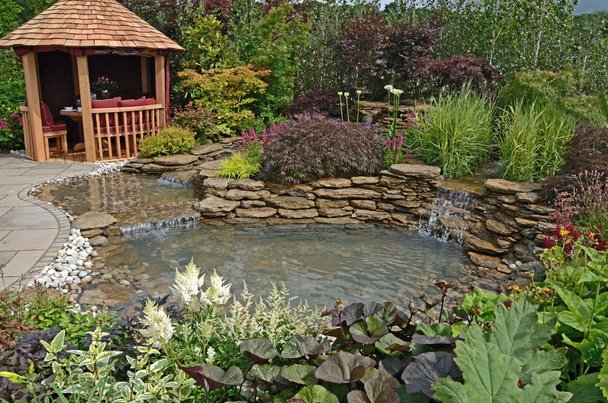Rocks? Does it make a statement?
Landscaping with rocks
Trees, bushes, flowers, and maybe even a piece of furniture will always add a little character to a beautiful lawn, but why not take it a step further with rocks. Whether it’s a pathway leading to a secret garden or an area for your campfire pit, finding the right rock can mean everything. Some rocks need a little more maintenance than others and some rocks work well with different terrains and weather conditions surrounding your home. Some rocks have been smoothed and rounded by water over many generations, river rocks also come in a variety of sizes and colors.
Pick the right one
Whether you have a need to make your patio look more professional, make sure your driveway sturdy enough for the traffic going back and forth to your property, or just adding a special touch to your garden, it does take some research into know what the best stone or pebble or gravel is you will need. Flagstone’s natural beauty, durability, and versatility make it a perennial favorite for patios. Its irregular shapes and rich textures create a visually captivating surface that complements various architectural styles. Crushed rock patios display a rustic charm that complements various landscape designs. The angular edges of the crushed rock provide excellent traction, making them ideal for patios that experience heavy foot traffic. Pebble patios, also known as river rock patios, offer a unique blend of playful charm and refined elegance. The smooth, rounded stones create a visually stimulating surface that evokes a sense of tranquility and natural beauty. These are just a few to name, but so many more to choose from.
Weed free rocks
Before we dig into solutions, let’s identify the usual suspects. In Southern Georgia, common weeds that plague rock landscapes include some of these names. Dandelion, these familiar, yellow-flowered weeds have deep taproots that make them difficult to eliminate. Crabgrass, this sprawling grass thrives in sunny, dry conditions and spreads rapidly. Spurge, various species of spurge, with their milky sap and inconspicuous flowers, can quickly take over rock gardens. Oxalis (Wood Sorrel), this clover-like weed produces small yellow or pink flowers and spreads through underground rhizomes. These stubborn plants abuse the well-draining conditions of rock landscapes, making them particularly challenging to manage.
Keep going
Hand-pull weeds as soon as they pop up, making sure to remove the entire root system to prevent regrowth. For those stubborn weeds, use a weeding tool to loosen the soil around the roots before pulling. It is best to weed after it rains or watering session when the soil is moist, making it easier to pull out. Consider using natural herbicides like vinegar for spot treatments on tough-to-remove weeds, but always test in a small area first to ensure it won’t harm your desired plants or the surrounding environment. This Eco-friendly method can be surprisingly effective, especially on young or tender weeds. Carefully pour boiling water over weeds, avoiding contact with your desired plants. The heat from the water will damage the plant cells, causing the weed to wilt and die. Be sure to apply the water directly to the base of the weed to target the roots for the best results.
Be Prepared
Preparing the site for your landscape with any type of rocks remove all existing weeds, including their roots. Bring in compost to improve its structure and make it harder for weeds to take root. After that it is very important to level and compact the area to create a smooth and stable base for your rocks and landscape fabric. Lay down a high-quality landscape fabric beneath the rock layer and secure it with staples. This barrier allows water to drain while preventing weed seeds from planting and blocking existing weed growth. Make sure to choose a non-woven fabric that is UV-resistant to ensure longevity and prevent week growth from underneath.
That’s a nice boulder
Putting in a boulder to your landscape will always add a visually striking element, but also adds an overall aesthetic appeal. Their natural shapes, size, and texture create focal points that really blend into different designs and styles you must create that sense of natural environments. Incorporating boulders into landscaping designs minimizes the need for regular maintenance, offering a durable and long-lasting solution. This not only saves time and effort but also ensures a consistently attractive landscape throughout the seasons. Strategically placing large boulders along the perimeters creates a visually appealing boundary that outlines different areas within the garden. Always consider the scale of your landscaping project and choose boulders that complement the size of your outdoor space. A net trick before going out to a rock yard to choose your boulders, fill a plastic trash bag of various sizes with crumpled newspaper, place them in the areas where you want to use them to give you a good idea of how different sizes will look and how many you’ll need.






